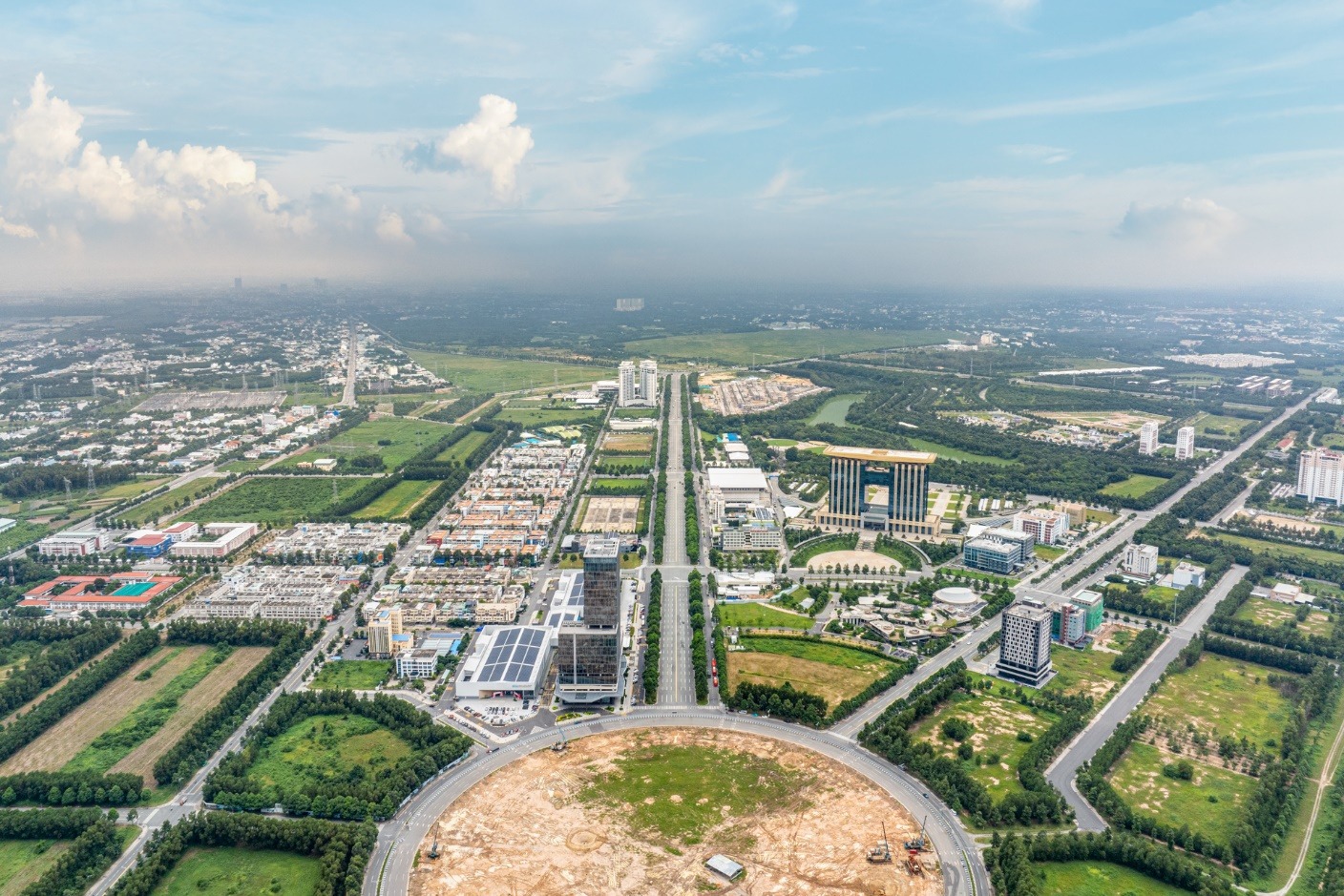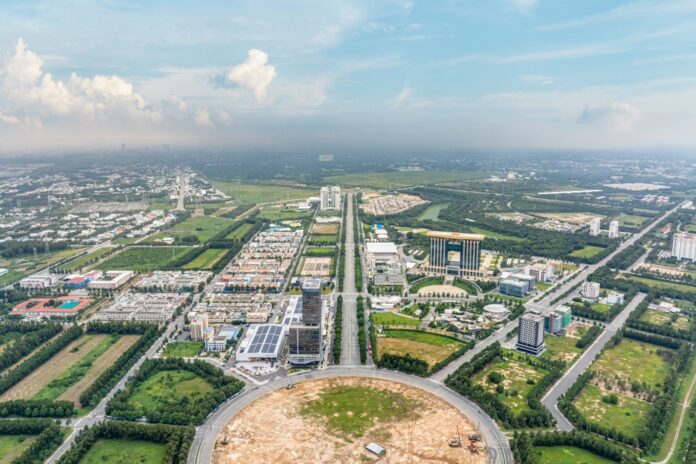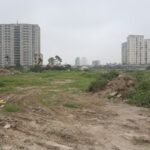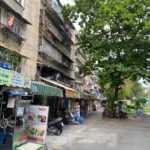
The latest newsletter from the Vietnam Real Estate Brokers Association (VARS) assesses that the real estate market in Ho Chi Minh City and its neighboring provinces is in a “transformational” phase, showing positive signs of recovery after a stagnant period.
According to VARS, since late 2024, efforts to resolve legal obstacles and positive information about planning and infrastructure have significantly improved market liquidity and selling prices in the southern region.
Entering the first quarter of 2025, despite limited supply, mainly from existing inventory with only about 2,000 new products launched, projects have witnessed a significant increase in absorption rates thanks to the recovery of positive demand. Notably, the return of investors who had previously focused on the northern market officially confirmed the recovery signal. At the end of the first quarter and the beginning of the second quarter, investors launched projects at a higher frequency, helping the region’s supply to recover and gradually regain its position in the country’s housing supply structure.
The Southern Region’s New “Hot Spot”
However, price movements in the region still show a divergence. In Ho Chi Minh City, high property prices make it difficult for real demand to recover. Stimulated demand, including investment and residential needs, shifts to adjacent areas with legally compliant projects, attractive prices and policies, and increasingly complete infrastructure connections. Among them, Binh Duong has emerged as a “hot spot” in the southern region, strategically located and well-connected, with a vibrant real estate market.
VARS research data shows that in 2024, while the real estate market in other southern localities did not see much significant improvement, the Binh Duong real estate market warmed up. Specifically, in 2024, the Binh Duong market recorded the launch of over 5,000 products, more than twice as many as in the same period last year, mainly apartment buildings, with an average primary selling price of VND 43 million/sqm. The overall absorption rate reached 74%, with over 90% of transactions coming from the apartment segment.
Entering 2025, the Binh Duong market showed clear signs of recovery, thanks to an improving supply trend from a series of new real estate projects approved for investment and unblocked after years of stagnation. Notably, in early June, several real estate projects officially launched, creating a significant impression with about 70% of the inventory being traded shortly after the opening.

The Binh Duong market showed clear signs of recovery in 2025.
The launch of a series of projects amid positive signals from the macro economy, infrastructure, and planning further stimulates investment demand after a period of suppression, ushering in a new boom cycle for the market. The segment catering to real housing needs in areas adjacent to Ho Chi Minh City, including the New City of Binh Duong, Thuan An, and Di An, is the focal point.
The Binh Duong real estate market has many inherent advantages for development. Binh Duong is known as the “industrial capital” with a series of large-scale industrial parks such as VSIP, Song Than, and My Phuoc. However, Binh Duong’s role is rapidly expanding beyond being a high-quality urban area for the intellectual workforce in the region. It is also emerging as a housing infrastructure support for Ho Chi Minh City, where inner-city land is becoming increasingly scarce.
Areas like Di An and Thuan An, two gateway cities adjacent to Thu Duc City in Ho Chi Minh City, are leading this trend. In addition to their increasingly complete transportation infrastructure (National Highway 12, Metro Line 1, Ring Road 3, etc.), this area also witnesses the development of integrated urban areas and high-quality high-rise projects that meet international standards. The prices here are 20-30% lower than in the adjacent area of District 9 in Ho Chi Minh City and comparable projects in the satellite city of Hanoi.
Significant Boost in Planning and Infrastructure
In addition to its inherent advantages, the Binh Duong real estate market is on the cusp of entering a new cycle, benefiting from significant boosts in planning and infrastructure. Notably, the proposal to merge three localities: Ho Chi Minh City, Binh Duong, and Ba Ria-Vung Tau, and the initiative to form an International Financial Center in Thu Duc City.
First, Ho Chi Minh City’s Department of Finance has proposed building an International Financial Center in Thu Duc City. This center is expected to concentrate financial institutions, multinational corporations, technology enterprises, and international representative offices. With a focus on developing commerce and services and limiting residential areas in Thu Duc, the demand for living and housing for tens of thousands of experts, engineers, and managers will spill over to the adjacent areas. The central southern Binh Duong cities of Di An and Thuan An, located just 20-30 minutes from Thu Duc, will be the first to benefit.
The formation of this International Financial Center will not only require a diverse range of high-end residential supply but also spur the need for a synchronized ecosystem of infrastructure, utilities, commerce, and services. As a directly adjacent area, Binh Duong will greatly benefit from urban upgrades. Moreover, as the southern region’s industrial capital, Binh Duong’s industrial real estate will also benefit from the demand for logistics infrastructure and warehouses from financial, technology, and global logistics enterprises.
Second, the merger of Binh Duong, Ba Ria-Vung Tau, and Ho Chi Minh City, all among the largest economic centers in the country, will not only lead to a powerful restructuring of infrastructure and development space but also create a “super region” with a manifold positive impact. Each locality will not only leverage its strengths but also complement and enhance each other’s value. Binh Duong, the largest industrial center in the south, will gain further momentum by directly accessing the system of deep-water ports and seaside tourism in Ba Ria-Vung Tau and Ho Chi Minh City’s financial, commercial, and service infrastructure.
This will attract high-quality investment and residential capital, leading to a rapid increase in population and housing demand, especially for high-end properties from experts, the middle class, and high-income earners. This demand will quickly expand from the core of Ho Chi Minh City to the surrounding satellite cities.
Third, the merger will create an interconnected and synchronized infrastructure system, thereby enhancing inter-regional and intra-regional connectivity. Strategic infrastructure projects such as Ring Road 3, Bien Hoa-Vung Tau Expressway, and the Metro connecting Ho Chi Minh City to Binh Duong will not only serve transportation purposes but also become urban, industrial, and commercial development axes. With the development of synchronized infrastructure, administrative boundaries will become blurred, and the Binh Duong real estate market, especially the area adjacent to Ho Chi Minh City, will directly benefit from the wave of urban population decentralization and redistributed capital investment.
Moreover, the merger will unify development standards, urban planning, project approval procedures, land pricing, and investment processes, creating consistency and transparency. This will enable developers to accelerate project implementation and market launch.
Based on these factors, residential property prices in Binh Duong, particularly in the apartment segment serving real housing needs in areas adjacent to Ho Chi Minh City, will continue to increase in the coming time. This is driven by the increasing demand from a series of policy, infrastructure, and planning boosts, along with the direct impact of input cost fluctuations. Recently, several projects in Binh Duong have had their legal obstacles related to land use charges resolved, with approved rates significantly higher than in the previous period. As a result, developers have had to adjust primary selling prices upwards to maintain profit margins.
This trend is expected to continue as many projects that were previously “legally stalled” are being unblocked in a similar manner. Additionally, new investment-approved projects will also face higher financial cost bases due to the new land price framework, putting upward pressure on primary prices from the initial implementation phase. Projects with higher selling prices will still be well-absorbed when meeting real housing needs, thanks to the push from the urban population decentralization trend, the flow of capital to peripheral areas, and the demand from experts in industrial parks and the planned international financial center.
The City of Ho Chi Minh Introduces a 7-Step Renovation Process for Old Apartment Buildings
The Ho Chi Minh City authorities are taking proactive steps to reinvigorate development projects by introducing a competitive bidding process. This process will identify and select new investors with the requisite capabilities to replace those who are no longer legally compliant or have delayed implementation, especially in projects undertaken or previously ceded by state-owned enterprises.
The Billion Dollar Resort: Unveiling the Mastermind Investors Behind the Vân Đồn Project
The People’s Committee of Quang Ninh Province has just approved a colossal investment project for an integrated tourism, entertainment, and premium resort complex, along with a golf course and residential area in Monbay Van Don. This ambitious venture boasts a staggering total investment of over VND 24,883 billion.














































